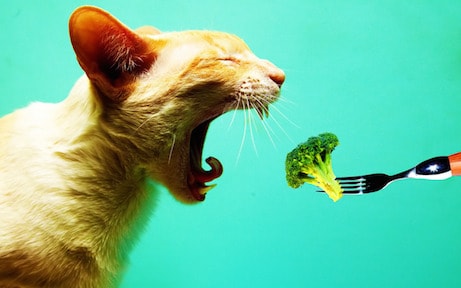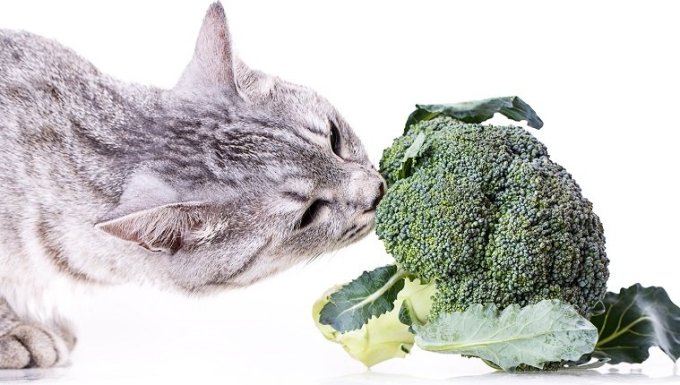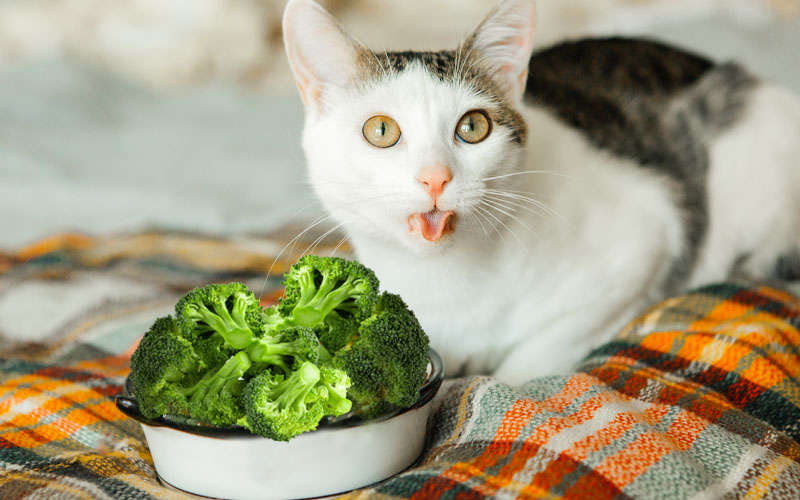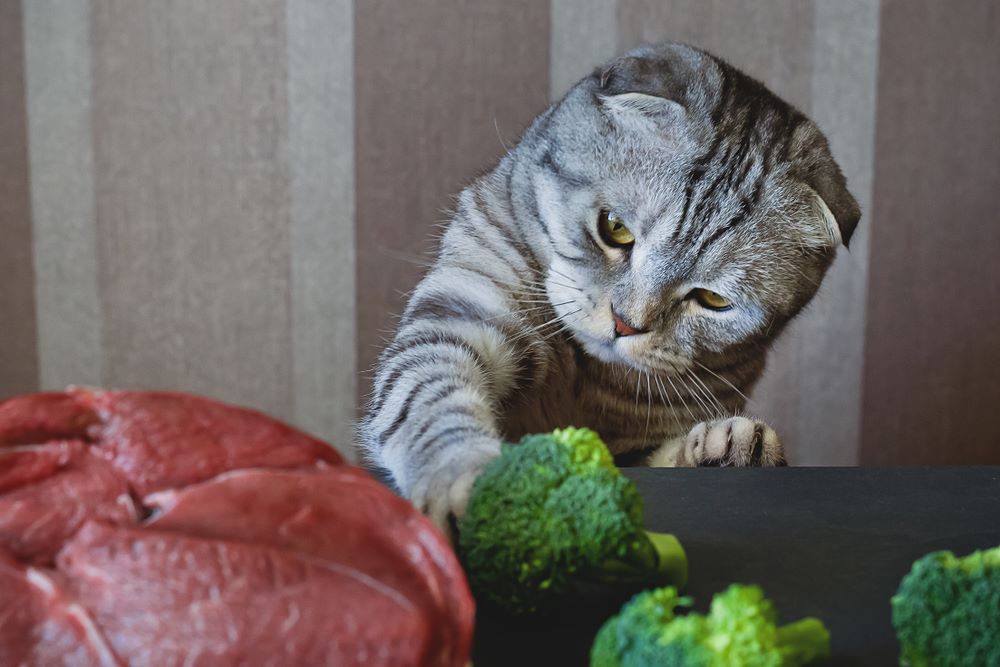It’s very unlikely that you would feed your cat broccoli or that your cat would sniff your plate with broccoli, but if you’re curious to know can cat eat broccoli, the answer is yes, they can. These delicious green veggies are safe for your feline friend to eat in small quantities.
Cats are obligate carnivores which means their systems have been developed to include fish and meat. So your cat’s diet shouldn’t consist of pure veggies. Cats can be finicky eaters so to keep your feline friend healthy, you can add a few pieces of veggies in their diet will provide more selection and add some healthy fiber, vitamins, and minerals. Steamed and unseasoned broccoli retains most of its nutrients and reduces the risk of a digestive upset or choking.
Broccoli’s nutritional value
Most people eat broccoli so it’s a common food in most kitchens. One of the most important properties of broccoli is it’s an antioxidant that helps to fight the free radicals in your body reducing your risk of cancer.
Another great benefit is that this veggie is a very good source of roughage which helps to improve bowel movement giving you and your feline a healthier digestive system. When your cat has an upset stomach, you will mostly find it eating grass, but broccoli is a better option.

Apart from providing a slight boost in the immune system, eating broccoli can help in inducing vomiting in case your cat is constantly hacking up furballs or having an upset stomach.
Broccoli is a veggie that doesn’t contain fats so it’s low in calories which means it can help in lowering your cat’s cholesterol levels and this helps in managing their weight if your cat is overweight. Other healthy ingredients you will find in broccoli include phosphorus, magnesium, vitamins B6, E, and K, calcium, and some zinc and iron.
All these essential nutrients are not only beneficial to your health, but also for your feline friend.
Potential side effects

While broccoli may improve the health of your cat, you should exercise caution when feeding this veggie to your cat. No matter how nutritious broccoli is, your cat can’t be able to absorb all the nutrients from this veggie. Broccoli has no toxic element, but there is no guarantee of how your cat’s stomach will respond to it without any complication as their stomachs aren’t well adapted to digesting large amounts of veggies. So, whenever you’re introducing a new food, do it gradually so you can easily stop if you see diarrhea or vomiting.
Cats by nature are carnivorous, so if you make broccoli one of the main foods in your cat’s diet, most likely your cat will develop a vitamin-deficiency disease. To avoid this problem, it’s healthier if you fed broccoli to your cat in moderation to allow the digestive system to get accustomed to such foods.
Cooked or raw, which is better for your cat?

If this was a question posed to human beings, most would pick the latter as it’s the safest choice. So what about your feline friend?
According to most pet experts, well-cooked broccoli is better for your cat because cats don’t have the proper digestive enzymes that can easily break down raw plant matter. Uncooked broccoli is harder for cats to digest which means it can lead to gastrointestinal problems. Also if you cut the veggie to tiny pieces, they might choke your cat. Broccoli may have more nutritional value if eaten raw, but it’s better if you feed your cat when it’s cooked.
Boiling broccoli ensures that it’s properly cooked and this is the easiest form of broccoli that your cat can digest because it softens the plant fiber. However, boiling broccoli causes it to lose some of its nutrients and some healthy compounds like vitamin C, chlorophyll, soluble sugars, and soluble proteins. It also reduces significantly the compound that is responsible for reducing the risk of cancer. So this form of broccoli is easier for your cat to digest, but has less nutritional value.
Steamed broccoli, on the other hand, is in the middle between raw and boiled. Steaming broccoli helps to retain most of its nutrients and important compounds, but it leaves the veggie half cooked. So it’s harder for your cat to digest than when boiled, but easier than if raw.
The best way to serve your cat broccoli
Broccoli should be fresh and washed thoroughly and cut into small bits to avoid choking. Remove the large stems in the veggie. As earlier mentioned, raw broccoli is very hard for your cat to digest, so to avoid stomach problems for your cat, boil it for a few minutes to make it easily digestible. Avoid putting any flavors, herbs, or seasoning like butter or salt because although these ingredients are good for humans they can harm your cat’s health. Let it cool down before serving it to your cat. You can use broccoli as a treat that you add to your cat’s diet once in a while.

Do cats like broccoli?
While some cats may have an interest in broccoli, others may not even want to smell it, so it differs from cat to cat. Your cat may be drawn to broccoli the same way it’s drawn to grass and other plants. Although there is no concrete evidence or reason why cats sometimes choose to chew grass and other plants like broccoli when they aren’t lacking in their dietary needs, some vets might have some ideas.
An idea would be that because cats love to explore, this is their way of exploring with their mouths. Your cat may just be enjoying a new taste or texture or trying to make themselves vomit.
So, can cats eat broccoli?
The answer is yes. Cats can eat broccoli provides it’s in limited amounts. Broccoli is a great replacement and a nice way of changing your cat’s normal menu to include different tastes and flavors. Broccoli is safe for your feline friend to eat, it’s non-toxic and it’s loaded with dietary benefits that will make its introduction worthwhile. Just remember to boil it so that it’s easier to digest.
